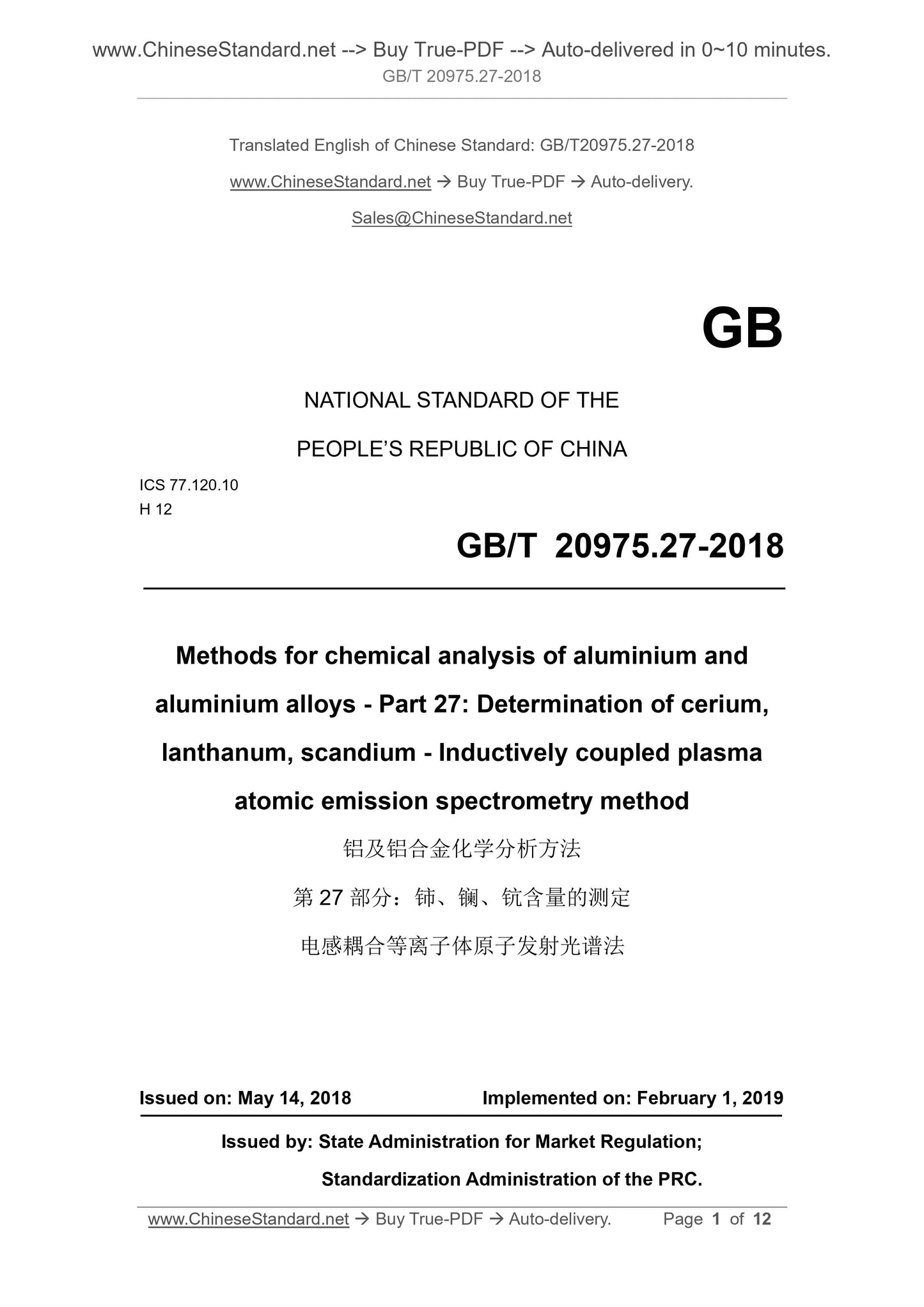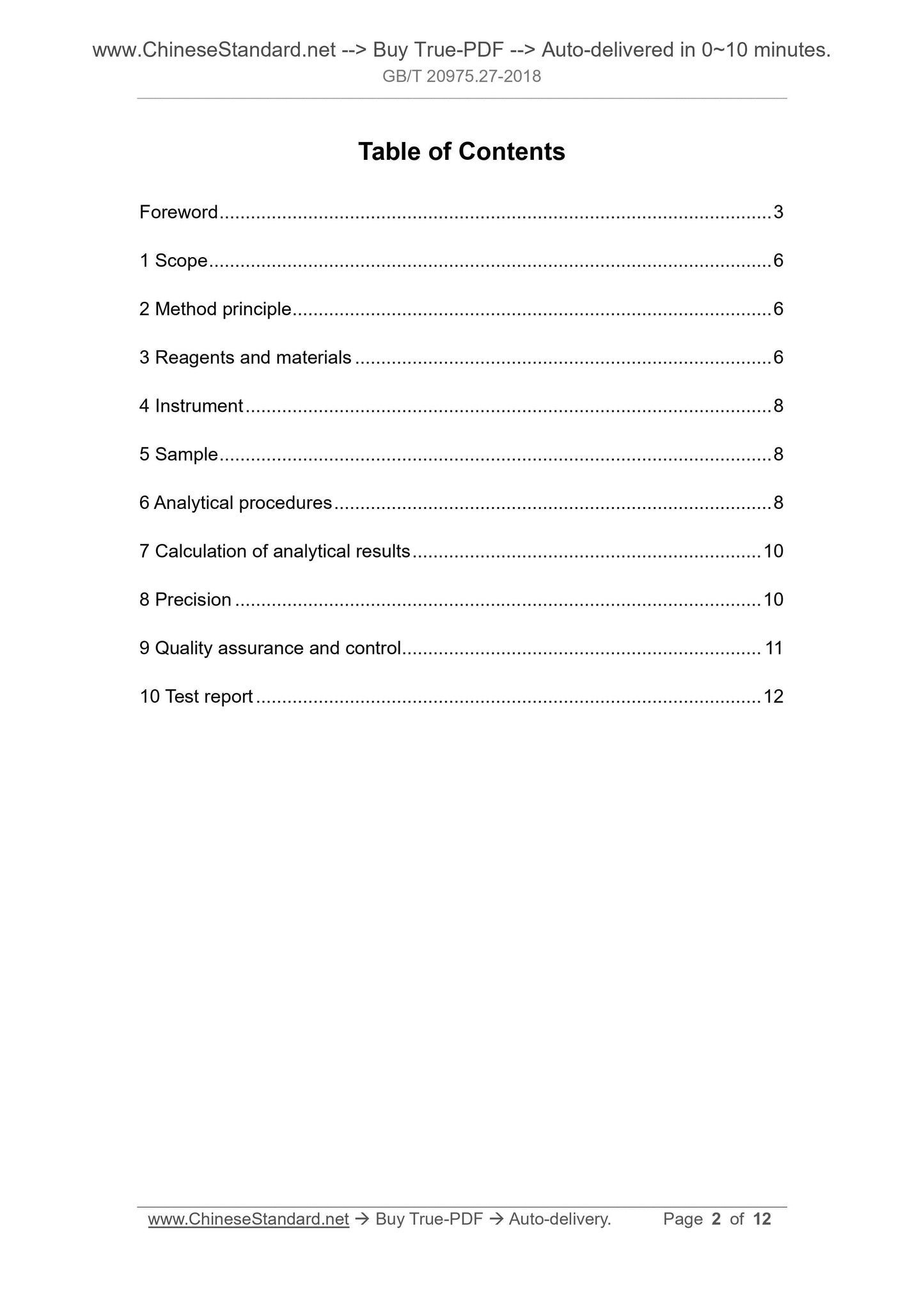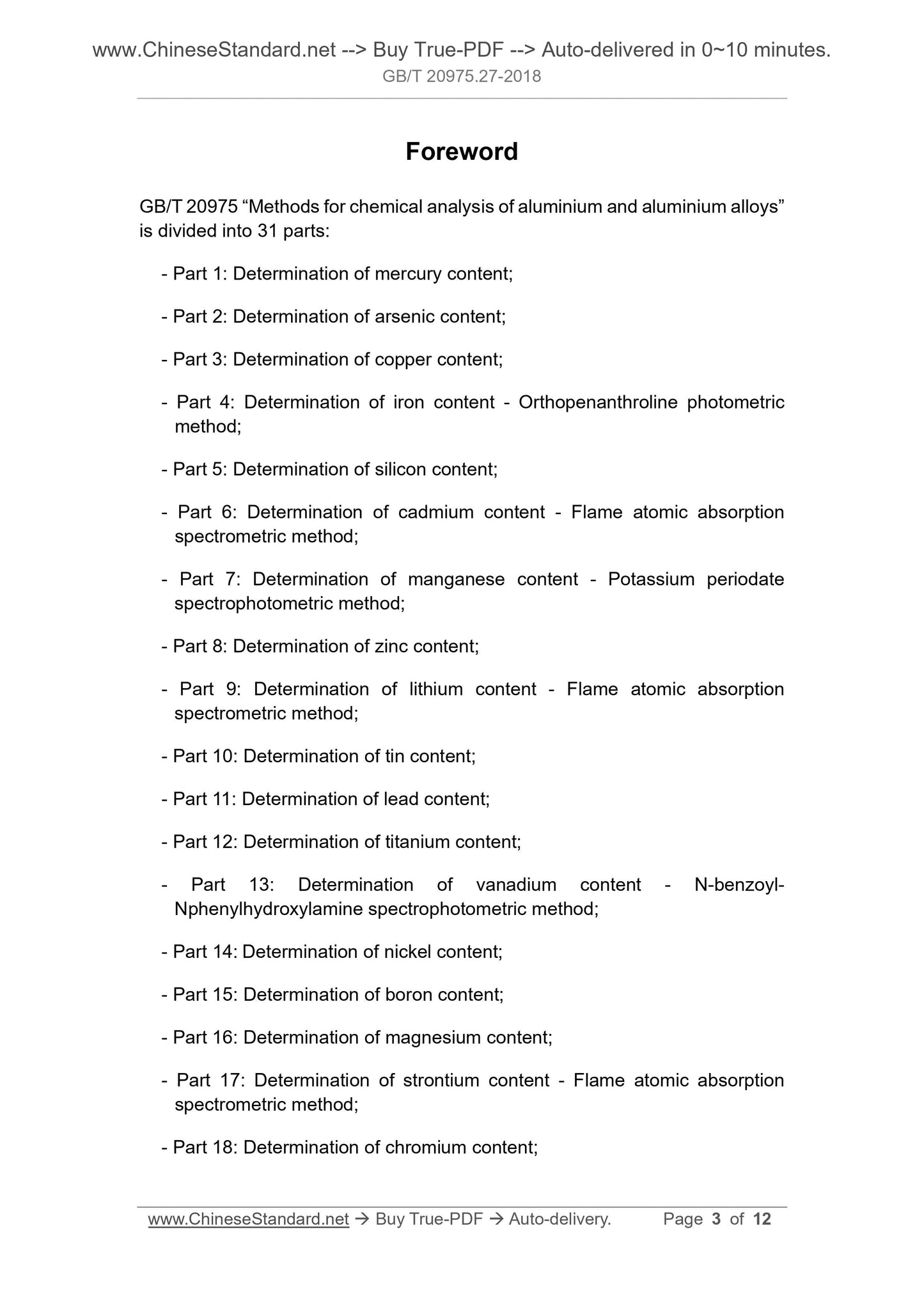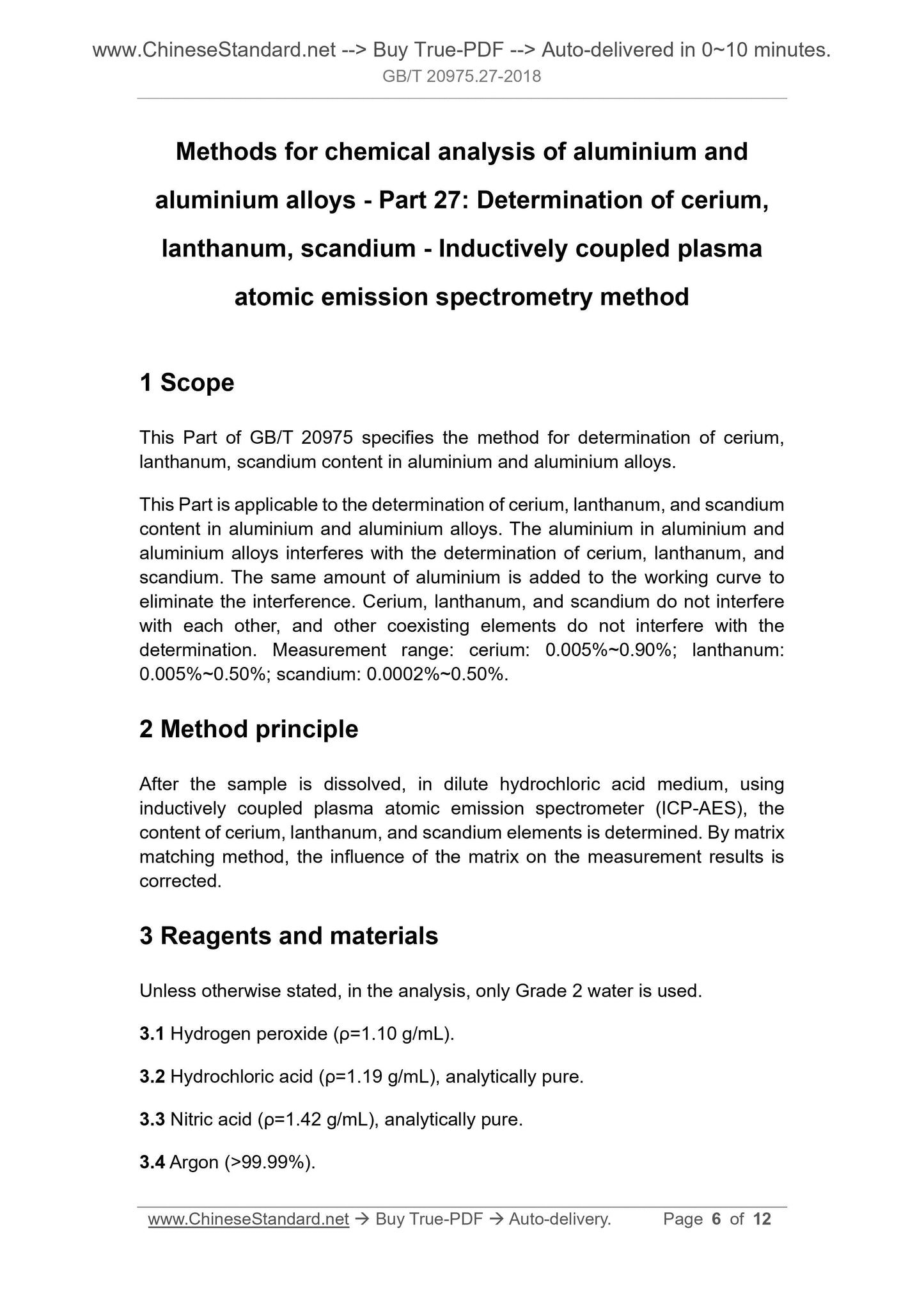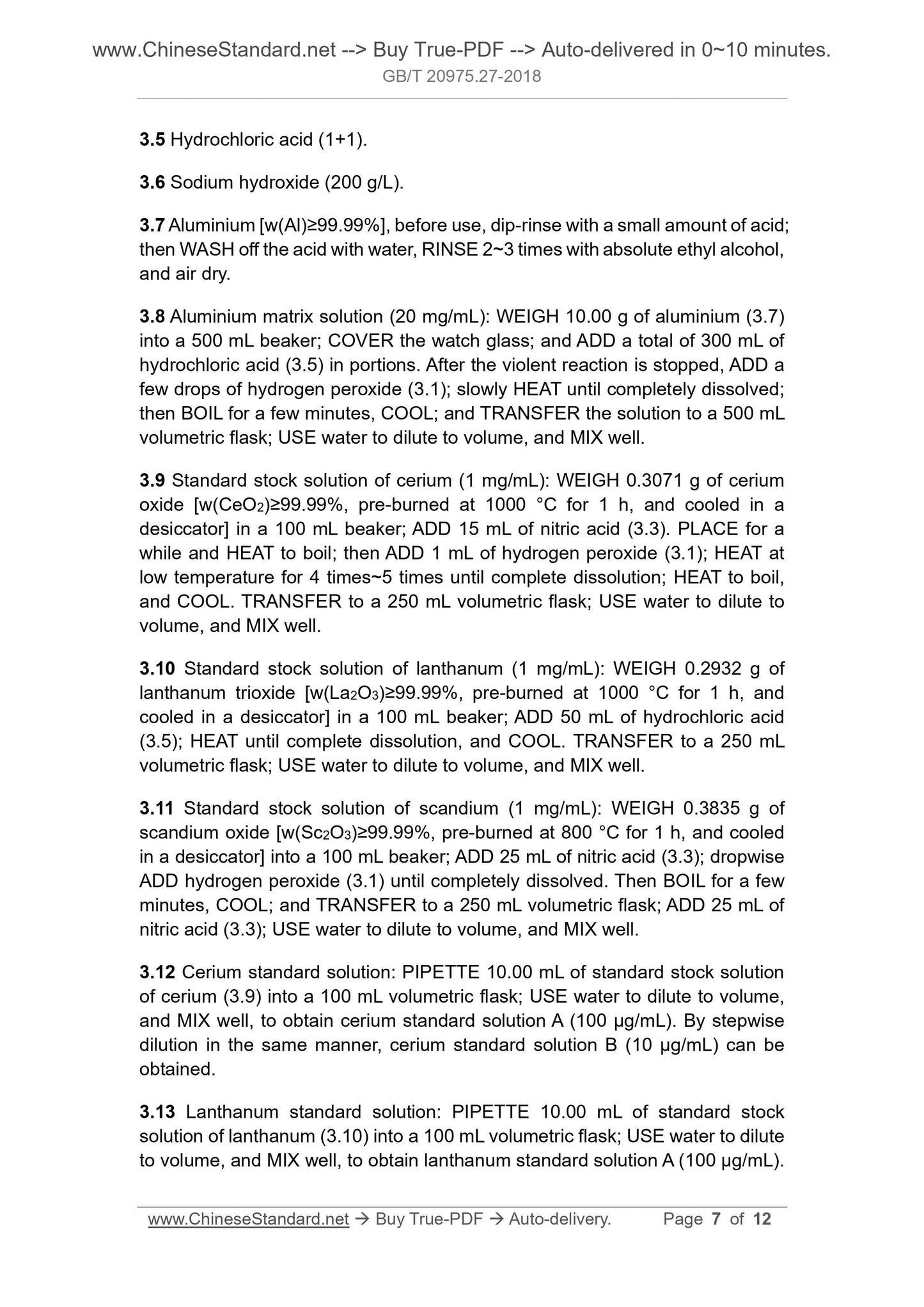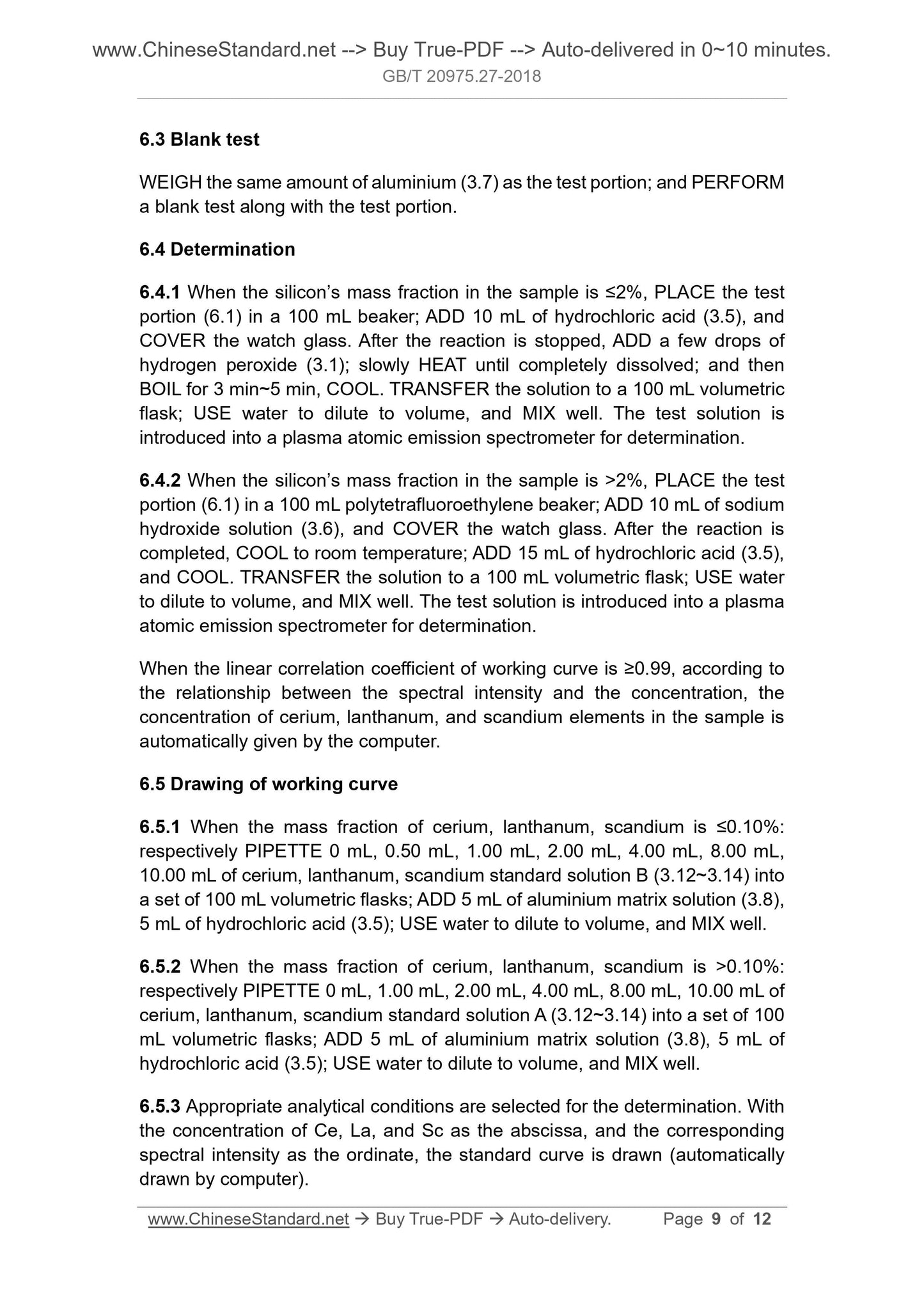1
/
of
6
www.ChineseStandard.us -- Field Test Asia Pte. Ltd.
GB/T 20975.27-2018 English PDF (GB/T20975.27-2018)
GB/T 20975.27-2018 English PDF (GB/T20975.27-2018)
Regular price
$130.00
Regular price
Sale price
$130.00
Unit price
/
per
Shipping calculated at checkout.
Couldn't load pickup availability
GB/T 20975.27-2018: Methods for chemical analysis of aluminium and aluminium alloys - Part 27: Determination of cerium, lanthanum, scandium - Inductively coupled plasma atomic emission spectrometry method
Delivery: 9 seconds. Download (and Email) true-PDF + Invoice.Get Quotation: Click GB/T 20975.27-2018 (Self-service in 1-minute)
Newer / historical versions: GB/T 20975.27-2018
Preview True-PDF
Scope
This Part of GB/T 20975 specifies the method for determination of cerium,lanthanum, scandium content in aluminium and aluminium alloys.
This Part is applicable to the determination of cerium, lanthanum, and scandium
content in aluminium and aluminium alloys. The aluminium in aluminium and
aluminium alloys interferes with the determination of cerium, lanthanum, and
scandium. The same amount of aluminium is added to the working curve to
eliminate the interference. Cerium, lanthanum, and scandium do not interfere
with each other, and other coexisting elements do not interfere with the
determination. Measurement range. cerium. 0.005%~0.90%; lanthanum.
0.005%~0.50%; scandium. 0.0002%~0.50%.
Basic Data
| Standard ID | GB/T 20975.27-2018 (GB/T20975.27-2018) |
| Description (Translated English) | Methods for chemical analysis of aluminium and aluminium alloys - Part 27: Determination of cerium, lanthanum, scandium - Inductively coupled plasma atomic emission spectrometry method |
| Sector / Industry | National Standard (Recommended) |
| Classification of Chinese Standard | H12 |
| Classification of International Standard | 77.120.10 |
| Word Count Estimation | 8,882 |
| Date of Issue | 2018-05-14 |
| Date of Implementation | 2019-02-01 |
| Regulation (derived from) | National Standards Announcement No. 6 of 2018 |
| Issuing agency(ies) | State Administration for Market Regulation, China National Standardization Administration |
| Summary | This standard specifies the method for determining the content of niobium, tantalum and niobium in aluminum and aluminum alloys. This standard applies to the determination of niobium, tantalum, and niobium in aluminum and aluminum alloys. Aluminum in aluminum and aluminum alloys interferes with the determination of niobium, tantalum, and niobium, and the addition of equal amounts of aluminum is added to the working curve to eliminate interference. The three elements of �� and �� do not interfere with each other, and other coexisting elements do not interfere with the determination. Measurement range: ��: 0.0050% to 0.90%, �� |
Share
